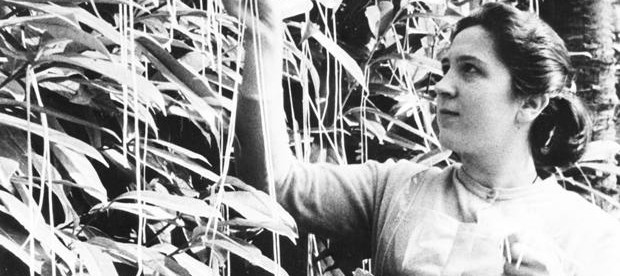The Spaghetti Tree Hoax

Money does not grow on trees. Neither do pineapples, for that matter — they grow like this, in case you were wondering. And neither does spaghetti.
Or does it?
Well, no. Spaghetti doesn’t grow on trees; here’s a video on how pasta is made, and there’s nothing even remotely tree-like in the process. But in 1957, many people in the United Kingdom were convinced otherwise, and even sought advice on how to start their own spaghetti orchards. It all started on April 1, 1957 — and the date is important — because on that date, the BBC aired a two-minutes segment, below (or here if that doesn’t work), explaining the true origins of the stringy pasta: the spaghetti tree.
As the video above “explained,” families in parts of Switzerland that year were cashing in on an “especially heavy spaghetti crop. The mild winter combined with the “virtual disappearance of the spaghetti weevil,” which had wreaked havoc on past years’ crops, had resulted in one of the best years yet for spaghetti harvesters. Further, the BBC reported, spaghetti science was advancing nicely — spaghetti comes off the tree at a constant length due to “many years of patient endeavor by plant breeders” to harness the cultivar. The entire story is a tribute to the hard working orchardists and their efforts to bring the spaghetti fruit to our tables.
To modern ears, the story is obviously ridiculous; today, pasta is ubiquitous and cheap, and clearly doesn’t grow on trees. But that wasn’t the so obviously the case in the UK in the 1950s. Spaghetti didn’t come in boxes, waiting patiently to be thrown unceremoniously into a cauldron of boiling water. Pasta was rarely seen for sale at all, and when it did it typically came sealed with tomato sauce in a tin can. Despite how unappetizing that sounds, spaghetti became an exotic delicacy — one whose recipe few people cared to understand. Sure, spaghetti was mostly wheat and water, but no one really knew that. So the BBC decided to have a little fun.
They fooled a lot of people in the process. According to a subsequent BBC article, many viewers “were so intrigued they wanted to find out where they could purchase their very own spaghetti bush.” Per yet another BBC report, “hundreds of people called the corporation after the broadcast” in hopes of getting that answer. And even another BBC report noted that “the reaction to the film was huge” and asked whether the spaghetti tree hoax was “the best April Fool’s ever.” (And lest you think that the BBC was a bit too proud of its own joke, others agree that this is one of the best such pranks out there.)
For those who were taken in by the ruse, the BBC decided to continue with the prank a bit longer. People who called in to ask how to cultivate their own spaghetti plants were instructed to take a small piece of spaghetti, place it in a can of tomato sauce, and wait. Hopefully, no one is still waiting.
 Bonus Fact: In 1982, the New York Times asked the proprietors of three of the city’s top Italian restaurants if it was acceptable to eat spaghetti with the assistance of a spoon (to twirl around a fork). The result: “As to the use of a fork plus a spoon for eating pasta, all those at the table were adamant. Spoons are for children, amateurs and people with bad table manners in general.”
Bonus Fact: In 1982, the New York Times asked the proprietors of three of the city’s top Italian restaurants if it was acceptable to eat spaghetti with the assistance of a spoon (to twirl around a fork). The result: “As to the use of a fork plus a spoon for eating pasta, all those at the table were adamant. Spoons are for children, amateurs and people with bad table manners in general.”
From the Archives: Dormant and Tired: An incredibly elaborate prank.
Take the Quiz: Pick the pasta, ignore the non-pasta.
